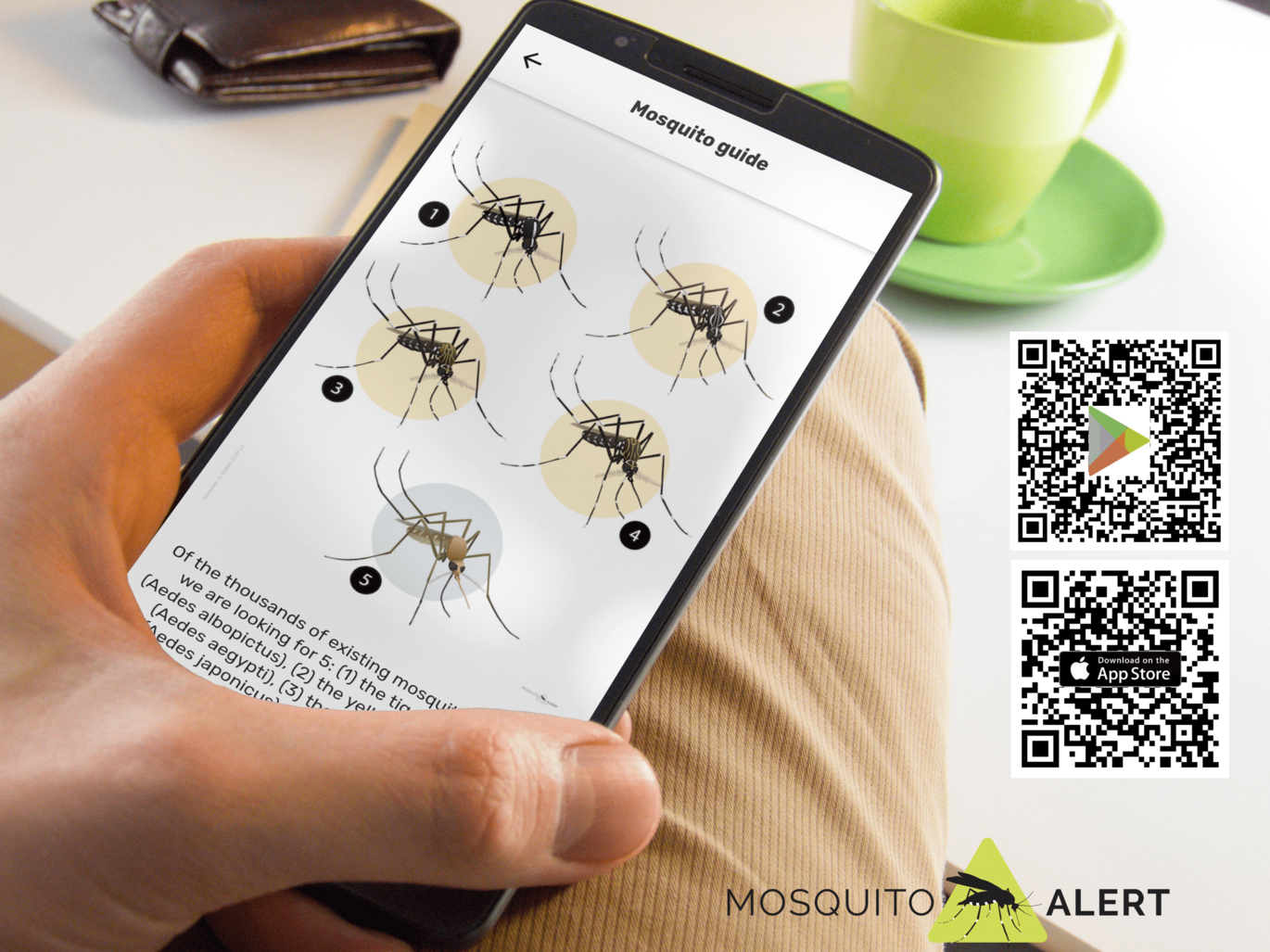So far, about 50 different species of gnats (mosquitoes) have been identified in Austria. These are not only a nuisance, they can also be vectors (= carriers) of human pathogens such as the West Nile virus. Particularly exotic gnat species (e.g. the tiger mosquito Aedes albopictus), which have only settled in Europe in recent decades, are often potential vectors of a variety of pathogens, such as dengue virus or chikungunya virus. Since the different species of yellow locusts differ in their capacity to transmit diseases, it is essential to record which species are present in Austria and how high their infestation with human pathogens is.
Austria-wide Gelsen and West Nile virus monitoring
In all nine federal provinces, catfish are being collected at 37 selected sites so far using special traps and their species determined. The target quantity is about 5,000 specimens per year. Special attention is paid to the search for the species Aedes japonicus (Asian bush mosquito) or Aedes albopictus (Asian tiger mosquito). In cooperation with the University of Veterinary Medicine Vienna, the collected mosquitoes are subsequently examined for West Nile virus, Usutu virus, Sindbis virus and Tahyna virus using molecular biological methods. If necessary, nucleic acid sequencing can also be used to determine the virus type.
As part of this monitoring program, Aedes japonicus japonicus was detected for the first time in Austria (southern Styria) in August 2011. In the same year, West Nile virus was detected in a single sample from Lower Austria (district of St. Pölten Land) in a domestic house catfish(Culex pipiens). The number of gnat traps is to be further optimized in cooperation with the provincial authorities and the Federal Ministry of Health and Women's Affairs, thus refining monitoring. Part of the mosquito fauna was surveyed within the AGES climate sound project VectorBorneDiseases (KR14AC7K11954 of the 7th Call Austrian Climate Research Programme) and by the University of Veterinary Medicine Vienna within ERA-Net BiodivERsA (GC-INVAMOFECT, national funding bodies FWF I-1437, ANR-13-EBID-0007-01 and DFG BiodivERsA KL 2087/6-1 as part of the 2012-13 BiodivERsA call).
Gelsen monitoring program at Vienna-Schwechat airport
Since 2018, AGES has been conducting a Gelsen monitoring program at Vienna-Schwechat Airport, as airports as well as ports represent a potential point of entry ("POI") for alien Gelsen. Therefore, the European Centre for Disease Prevention and Control (ECDC) as well as the World Health Organization (WHO) recommend mosquito monitoring programs at airports. These programs can detect whether exotic mosquito species are being introduced. If necessary, countermeasures can be taken quickly to prevent the further spread of these species. Special attention is paid to the Asian tiger mosquito (Aedes albopictus), which has already spread massively in Europe in recent years and is a potential vector for a variety of pathogens.
Austria-wide monitoring for the detection of alien gnat species
Since the problem of the spread of alien mosquito species exists throughout Europe, the EU project AIM-COST (Aedes invasive mosquitoes - European Cooperation in Science and Technology) was initiated. The main objective of AIM-COST is to establish a transboundary network of partners across Europe to cost-effectively address the management of the risk of introduction and spread of alien Aedes species (especially the Asian Tiger Mosquito). To this end, the AIMsurv pilot project took place in 2020, in which the 22 participating countries conducted a monitoring project for the first time according to a standardized scheme. In Austria, this study was organized by AGES in cooperation with the University of Veterinary Medicine Vienna and carried out with the help of several project partners (Biological Station Illmitz, Gelsenbekaempfung Leithaauen, Inatura, Landesmuseum Klagenfurt, Museum Johanneum (Graz), University of Innsbruck, University of Salzburg, Verein Biologische Gelsenregulierung March-Thaya-Auen). Within the framework of this monitoring, the occurrence and distribution of alien and potentially invasive catfish species are recorded by means of ovitraps ("egg traps"), according to uniform European standards.
The 2020 pilot study already provided the first overview of the distribution of the Japanese bush mosquito in the country. Furthermore, the tiger mosquito was detected at one site in Tyrol and for the first time in Lower Austria. In 2021, four different container-breeding Aedes species were detected: Ae. albopictus, Ae. japonicus, Ae. koreicus, and Ae. geniculatus. The Asian tiger mosquito(Ae. albopictus) was detected at nine sites in five states. Compared to the previous year, it was able to spread significantly in Austria. Especially in Vienna and Graz, this species occurs in large numbers, and it can be assumed that these populations will also overwinter here. In 2022, we detected the Asian tiger mosquito in all provinces.
Ovitrap monitoring of alien gnat species in Austria: annual report 2022
Ovitrap monitoring of alien gnat species in Austria: Annual report 2021
Life form types of the mosquitoes
In Austria, about 50 mosquitoes species from 7 different genera have been identified. They differ not only in their appearance and genetics, but also inhabit different habitats, prefer different breeding waters and also differ in their behavior, e.g. in their host preferences: In some species, females prefer to sting mammals, while in others they prefer birds or amphibians. Despite these differences, the gnats that occur in our country can be divided into a few life form types. Knowledge of these life form types is essential precisely because it makes it easier to understand their respective behaviors. This makes it easier to find your own strategies for protecting yourself from them and possibly preventing them from reproducing uncontrollably.
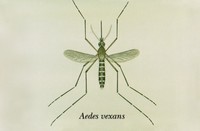
The group of the so-called flooded mosquitoes (representatives of the genus Aedes, e.g.: Aedes vexans, Aedes sticticus, Aedes rossicus) lay their brood mainly in dried terrain of floodplains, where the clutches can then wait for water for a long time - even several years. After a flood event, there is then an explosive and mass development of these Gelsen. By their own power, these gnats do not migrate far from the breeding sites, but they can be passively drifted by strong winds and thus reach distant settlements, where they are then a short-term nuisance not only at dusk, but also during the day. However, flooding mosquitoes very rarely invade buildings. As adult flying catfish, they live only a relatively short time and only the robust egg clutches overwinter.
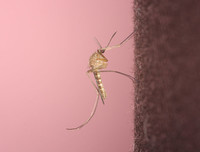
The biology of the so-called house mosquitoes (representatives of the genera Culex and Culiseta, e.g. Culex pipiens, Culex hortensis, Culiseta annulata) is quite different: Females survive the winter in nature in hollow trees and holes in the ground; in settlements, they enter houses for this purpose, for example, to hibernate in cellars or frost-free rooms. They are also the ones who disturb the hibernation in late summer and autumn. In the following spring, the hibernating female gnats seek out small pools of water near the hibernation site to lay their eggs. They use rain barrels, water-filled old tires, birdbaths, etc., as well as the banks of ponds and standing ditches as breeding waters. A female lays about 150-250 eggs as a package on the water surface, from which - depending on climatic conditions - several generations per year can develop. In residential areas, house catkins are the most common species and also invade houses. However, you can easily reduce them by avoiding possible breeding waters, e.g. cover rain barrels, renew water in birdbaths regularly, prevent water accumulation in flowerpot coasters, tubs, toys or tools or empty them regularly. This is also important because representatives of the house catfish (especially Culex pipiens) can also transmit West Nile virus.
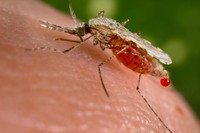
In terms of life form type, relatively similar to house jellies are the "fever jellies" or "malaria mosquitoes" (genus Anopheles), because they are also found in human structures. In particular, however, they seek out rather damp rooms and animal stalls, not only to hibernate, but also already during the summer months, for example as a resting place for pregnant females. As hosts, the females of this species prefer mainly large mammals such as cattle, but they also sting humans. They owe their name to the fact that the fever jellies - even in our latitudes - can transmit blood plasmodia (malaria vector). To do this, a fever jelly must ingest the relevant stages of the pathogens in the blood of a person already suffering from malaria. If the pathogen cycle in this mosquito can fully develop through a longer weather-dependent warm period and it then bites a human again, a malaria infection is theoretically possible in this country as well (although very unlikely). Anopheles species lay their eggs on the water surface in preferably clean and vegetated natural waters. They can also overwinter as egg or larval stages, and they occasionally form large populations in the open; often as a delayed second "plague wave" behind flooded gels after flood events.
Tree cavity breeders (mainly representatives of the genus Aedes, e.g. Aedes geniculatus) lay their eggs at the edge of tree cavities or other small amounts of water. If the water level rises after a rain and the eggs are flooded, they hatch. In urban areas, culture-following representatives of this group find many other possible breeding waters - from rain barrels to flowerpot saucers - and are therefore also called "container breeders".
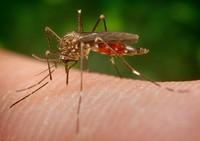
In Central Europe, alien gnats have become increasingly common in recent decades. These are container-breeding mosquitoes species, which originally come from southern tropical regions or from East Asia and were mostly introduced into Europe by means of freight transport. Under suitable climatic conditions, these species can colonize and spread further. Alien species that have been shown to cause changes in ecosystem structure and composition, adversely affect ecosystem services, human economy and well-being are also called "invasive species". In Austria, the Japanese bush mosquito (Aedes japonicus), the Asian tiger mosquito (Aedes albopictus) and the Korean bush mosquito (Aedes koreicus) have been detected so far. While the Japanese bush mosquito is already found in many parts of Austria, the Asian tiger mosquito and the Korean bush mosquito have only been detected in isolated cases. Since especially the Asian tiger mosquito could also transmit exotic pathogens (e.g. Chikungunya , Dengue, Zika), it is important to report occurrences of this species (via the app "Mosquito-Alert" ).
Tips for the prevention of gnats
Tips for the fall: do not let tiger mosquito eggs overwinter in your home.
Tiger mosquito eggs can survive the winter. The eggs stick to the rim of various containers that have previously been allowed to collect water (flower pot coasters, birdbaths, watering cans, etc.). The eggs survive even if the container dries out. Therefore, to prevent eggs from overwintering and larvae from hatching in the spring, it is especially important to thoroughly clean all containers in the fall. To do this, the containers should not only be rinsed, but also wiped down and then stored in a dry place.
Avoid breeding sites all year round
- Empty small water containers at least once a week (birdbaths, flower coasters, wading pools, toys, etc.).
- Avoid so-called micro watering holes in your garden or on your balcony by removing them, covering them or filling them with sand. Micro water points are for example umbrella stands, fence tubes or decorative elements.
- Avoid other water accumulations: To do this, store items such as watering cans, tires, empty flower boxes, ashtrays, sand toys, etc. underneath a roof or turn items over so that water cannot accumulate in them.
- Seal rain barrels tightly or cover them with fine mesh insect screens.
- Avoid clogged gutters and dripping faucets.
How do I protect myself from bites in the warm season?
- Seal openings of windows and doors with fine mesh insect screens.
- Wearing long, light-colored clothing and applying effective repellents (insect repellents) can protect against bites. When using repellents, please follow the correct application according to the manufacturer's instructions.
Further measures for larvae control in case of nuisance by tiger mosquitoes
- Artificial water points that cannot be drained (sewage gutters, sewer drains, rain barrels, etc.) can be treated with gelatinous larvicide available on the Austrian market. When using larvicides, please observe the correct application according to the manufacturer's instructions.
- Natural waters, such as ponds and biotopes, should not be treated. Gelsen larvae are an important part of the food chain and are eaten by other animals such as fish or dragonfly larvae.
Platform for reporting tiger mosquitoes and other gnats
Mosquito Alert is a citizen science project that makes it easy to report tiger mosquitoes and other gnats using a free app. Tiger mosquitoes are always smaller than a 1 cent coin, have a white stripe on the black dorsal shield and white stripes on the body and legs. The submitted photos are reviewed by national and international experts and the findings are then anonymously displayed on a publicly accessible map.
Why is it important to report tiger mosquitoes?
Tiger mosquitoes are alien gnats that originated in Asia. In the past decades, this species has spread strongly in Europe. Also in Austria this species has been found occasionally. Tiger mosquitoes are not only a nuisance, they can transmit a variety of pathogens (e.g. the Zika virus or the dengue virus). If tiger mosquitoes spread in Austria, these diseases could also spread in our country.
Other species of gnats
In addition to tiger mosquitoes, other species of gnats can be reported with the app. These are the also alien species Japanese bush mosquito, Korean bush mosquito and the yellow fever mosquito, which has not yet been detected in Austria. These species are also capable of transmitting certain pathogens and could displace native species. Furthermore, findings of the native common mosquito can be reported. Of the native species, this is the one that is most important in spreading pathogens (e.g., West Nile virus).
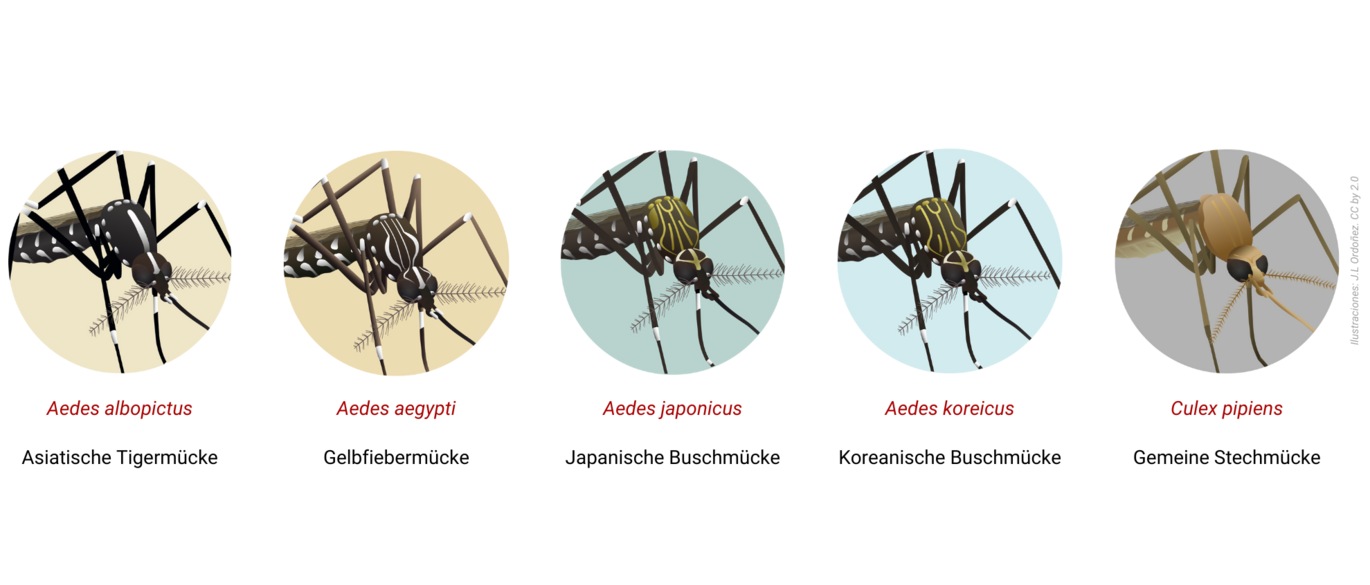
More information: Aedes Invasive Mosquitoes ECDC - Mosquito-borne diseases
Downloads
Last updated: 15.04.2024
automatically translated
